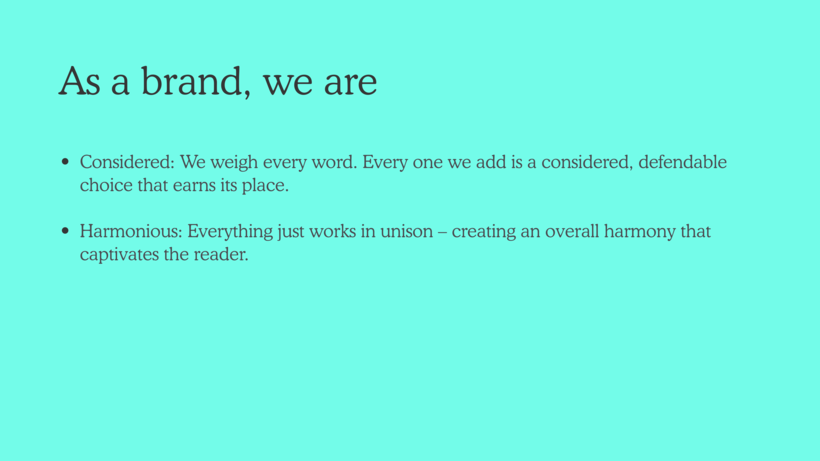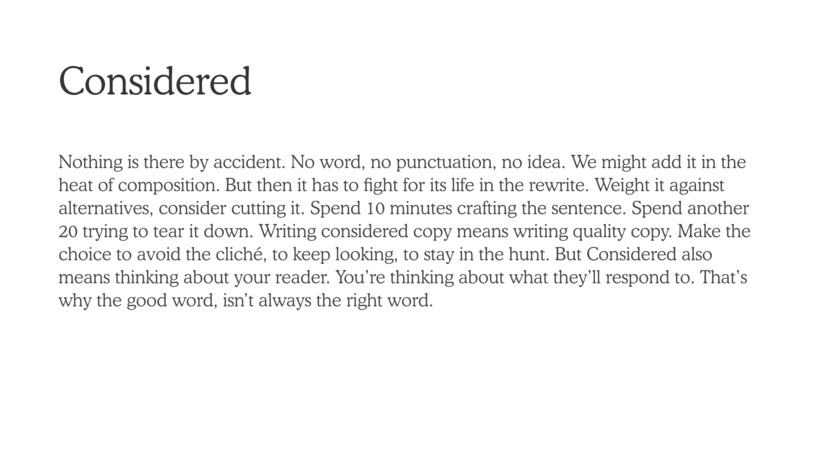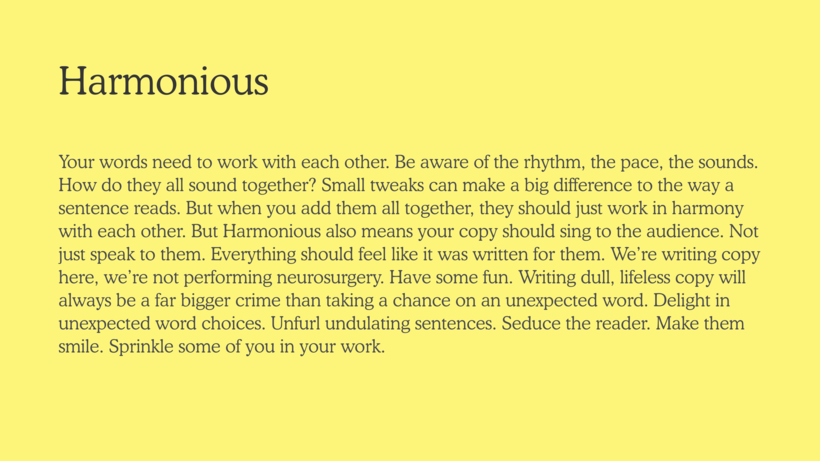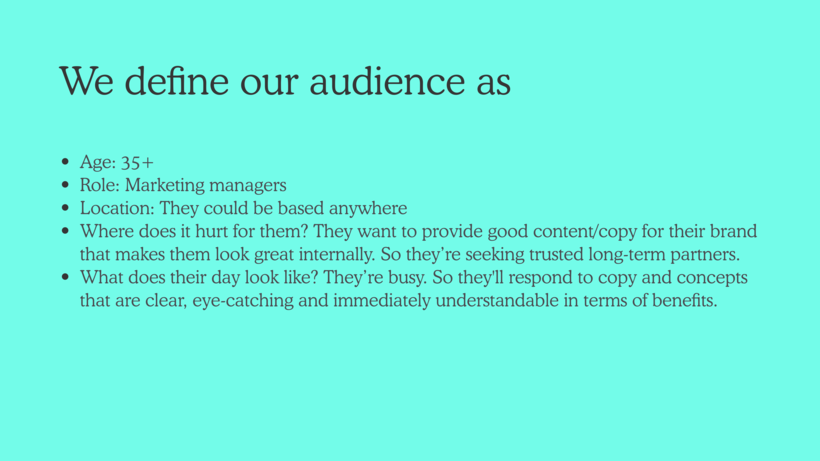Tone of Voice in Copywriting for Brands
Course final project
A course by Paul Anglin , Senior Copywriter
About the final project for: Tone of Voice in Copywriting for Brands
Tone of Voice in Copywriting for Brands
“Congratulations! That brings us to the end of the course. I really hope you've found it useful. We've worked through the critical steps of the tone of voice, why brands need it, and how to build your tone. Now, let's summarise the key points to complete your project.
Everything a brand writes is the tone of voice. Customer-facing copy, internal presentations, client emails, social posts. It all carries your brand's tone of voice. So make sure you don't forget any element of your brand communications regarding your tone.
Focus on all the things that make up the way you talk. Where you grew up, your parents, the books, series, and films you took in. All these things influence how you speak. They mean that some words and phrases will sound natural to you, some not. It's the same for brands. Some things don't sound right for specific brands.
Who is your brand? What do you believe? Where are you from? Geographically, socioeconomically, and culturally. All these things are relevant to your tone of voice. Invest time in thinking about your brand values. Everything flows from your brand values, so the investment is worthwhile.

- Get specific with your values.


- Make your values manageable.
- Develop a clear picture of your audience.

- Represent your brand through a brand identity, brand persona, or brand philosophy.

- Give clear examples of what to write, what not to write, and why.
- Demonstrate how you modulate.

- Distill your tone of voice into a typographic poster.

Partial transcription of the video
“That brings us to the end of the course for developing your tone of voice guide. We work through what tone of voice is, why brands need it, and how to develop your own tone. Before saying goodbye, I'd like to go over a few key points that I put together to help you develop your own tone of voice guide. Start off by understanding that tone of voice covers everything a brand says or does. Absolutely everything a brand writes is its tone of voice. Customer-facing copy, internal copy, social posts, emails, presentations, they all carry a brand's tone of voice. So make sure you don't forget any ...”
This transcript is automatically generated, so it may contain mistakes.
Course summary for: Tone of Voice in Copywriting for Brands
-
Category
Marketing & Business, Writing -
Areas
Advertising, Communication, Copywriting, Storytelling, Writing
Paul Anglin
A course by Paul Anglin
Paul Anglin is a senior copywriter and tone of voice consultant with over twenty years of experience based in Madrid, Spain. Since 2016, he has run his own studio, Craft Copywriting, where he works alongside his team writing for brands such as Nike, Apple, Microsoft, and Dunlop Sports.
He creates copy for digital media, app development, mobile, and print formats for agencies and brands in both London and Madrid. He also teaches copywriting for Master’s students at Madrid’s IE University.
- 97% positive reviews (66)
- 3,805 students
- 13 lessons (2h 41m)
- 20 additional resources (8 files)
- Online and at your own pace
- Available on the app
- Audio: English, Spanish
- English · Spanish · Portuguese · German · French · Italian · Polish · Dutch · Turkish
- Level: Beginner
- Unlimited access forever




